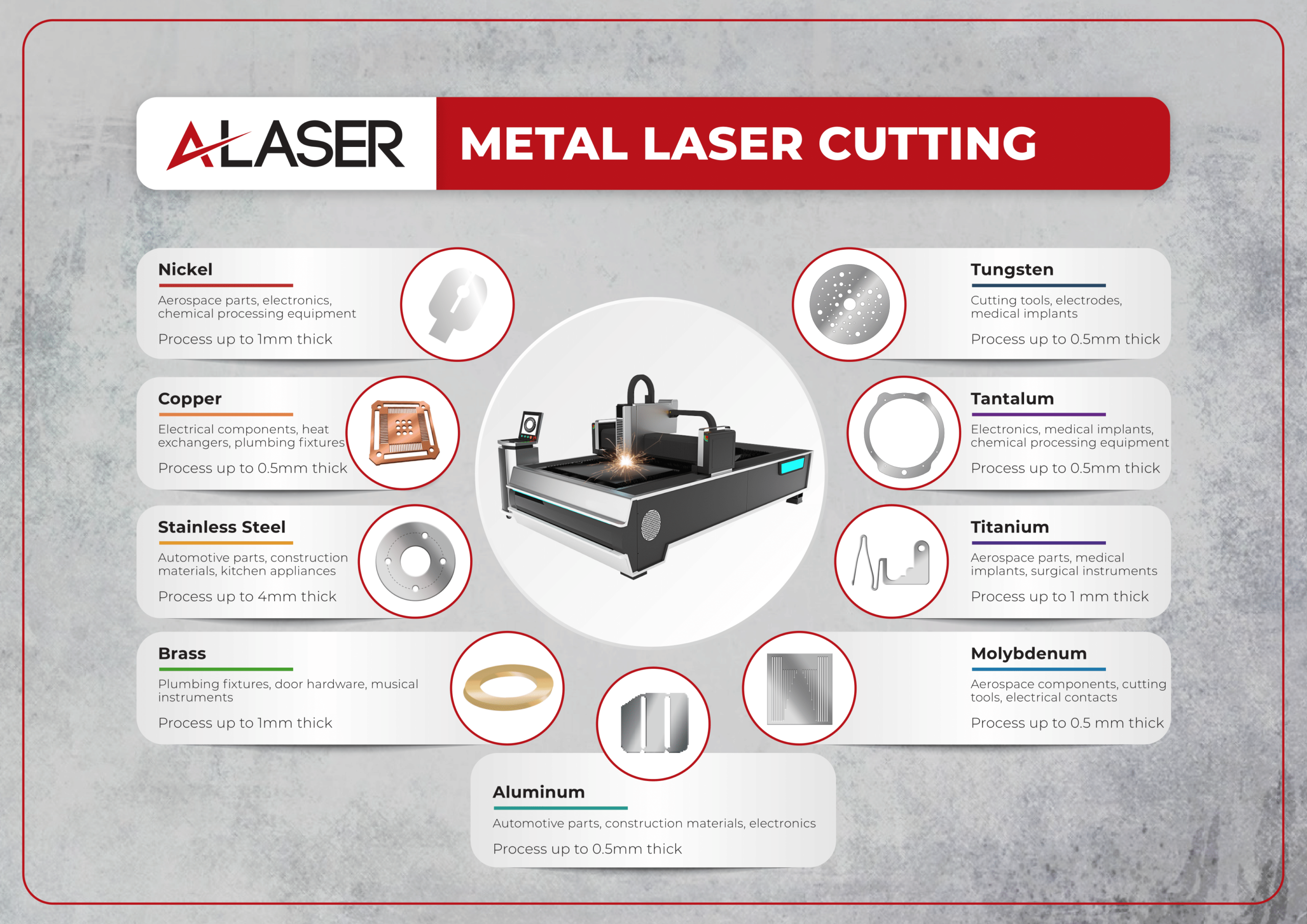A Tale of Precision and Innovation
The manufacturing of metal components is supported greatly by metal laser cutting machines. In the heart of Silicon Valley, there are start-ups always on the brink of revolutionizing the tech industry. Their latest products, sleek in design, minimalist in size for many, each demanding a level of precision and complexity that traditional manufacturing methods cannot deliver.
The challenge with many of these new products and systems is the intricate designs and complexity of materials. They may require a combination of sharp edges, smooth curves, tight radius and precise cutouts for the various components. These precision parts can be advancing optics, medical, aerospace, battery energy, solar energy and semiconductors, to name just a few. Traditional methods like CNC machining, while precise, can be time-consuming or not have the capability to handle without damaging thin delicate metal alloys and often results in material waste.
Start-ups and OEMS are turning to metal laser cutting as the solution. This technology offers the perfect blend of precision and speed. The low to high-powered laser systems can effortlessly slice through the metal, creating intricate designs with unparalleled accuracy. The sharp edges and smooth curves, once a challenge for traditional methods, are now easily achievable.
What Kind of Metal Laser Cutting Machines Do I need?
There is much information throughout this website on specific laser technology, but the following infographic shows in brief what metal laser cutting machine technology is available for manufacturing precision metal components:
| Laser System Types | Metal Cutting Range | Metal Types Cut | Unique Characteristics |
|---|---|---|---|
| Ultraviolet | Thin metal alloys below 0.254mm thick. | Stainless steel, copper, brass, aluminum, others. | Can cut non-metallics too like polymer, polyimides, adhesives. |
| Fiber | Metal alloys from 0.254mm to 4mm. thick | Copper, tungsten, titanium, brass, aluminum, stainless steel, others. | Faster cutting of thicker gauges. |
| Infrared | Stainless steel alloys 0.254mm to 0.635mm. | Stainless steel alloys. | Can cut in single units or as tabbed in sheet form. |
| CO2 | Varies from 2mm to 20mm thick. | Stainless steel, aluminum, brass copper. | More powerful systems are used to cut metals. Can cut clear plastics too very well. |
| Picosecond | Ultrathin- up to 0.050mm thick. | Aluminum, titanium, stainless steel others. | No HAZ or Heat Affected Zone. Great for micromachining. |
| Femtosecond | Ultrathin- up to 0.050mm thick. | Titanium, copper, stainless steel. | No HAZ or Heat Affected Zone. Great for micromachining. |
Why Metal Laser Cutting Can Be the Ideal Choice:
- Unmatched Precision: The laser’s focused beam allowed for incredibly precise cuts, ensuring that the components would fit together perfectly.
- Versatility: Laser cutting machines can handle a wide range of metal thicknesses and materials, from thin stainless steel to thicker titanium alloys.
- Efficiency: By using automated processes that can significantly reduce R&D, prototyping and production time, allowing customers to bring their product to market faster.
- Reduced Material Waste: The laser’s precise cutting minimized material waste, leading to cost savings and environmental benefits.
- Complex Shapes: The laser could easily handle the complex shapes and intricate cutouts required for the smartwatch case.

Where Can You See Metal Laser Components?
As diverse as metal alloys are, so are the industries using these types of materials. The decision for using a metal alloy can take much research and testing to qualify a selected metal alloy for a specific application. There are characteristics that recur with the main points that are reviewed such as strength, durability, corrosion resistance, electrical conductivity, pliability, and heat resistance. All these factors and many more have sub-categories going into further classifications and narrow down specific alloy types. Once confirmed and brought to laser manufacturing, you will metal alloys used for medical devices, both in treatment and diagnostics. For optics, shutters and light blocking components. You will see alternative energy research and manufacturing using alloys for electrical contacts and heat dissipation. Brazing technology is greatly enhanced by the precision of laser cut brazing alloys and adhesive application manufacturing, relies on the precise fabrication of metal nozzles to apply adhesives on products and packaging over hundreds of thousands of runs. Laser cutting machines are versatile for the industries they serve.
By embracing metal laser cutting, manufacturers can produce truly innovative products that exceed expectations. The sleek designs, coupled with advanced technology, can make a project move forward. The impact of laser technology in Silicon Valley is a glimpse of the far-reaching support metal laser cutting machines provide throughout the U.S. and abroad. The use of metal laser cutting serves as a testament to the power of innovation and the limitless possibilities of modern manufacturing.
